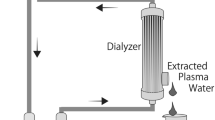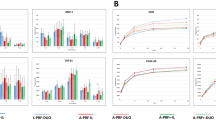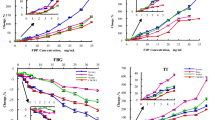Abstract
THE plasma of normal people has been shown to contain a labile, active fibrinolysin1,2,3. Since this enzyme is not necessarily plasmin and in some ways behaves differently from plasmin, it has been tentatively termed ‘plasma active fibrinolysin’2. The enzyme disappears rapidly from fluid blood and plasma kept at room temperature; but if blood is cooled immediately when taken and centrifuged at low temperature and the resultant plasma is diluted and clotted, lysis of the clots occurs within 24 hr. incubation at 37° C.2. Enzyme activity is insufficient to cause anything but slow and variable lysis of whole plasma clots4. Since lysis occurs on incubation, the enzyme is evidently stabilized once clotting has taken place, presumably by adsorption on fibrin. This suggested that pre-formed plasma clots might absorb the enzyme from fresh plasma. To investigate this possibility fifteen healthy individuals were studied. Citrated venous blood was obtained from each, and the resultant plasma kept at room temperature for 24 hours in order that all fibrinolytic activity should have disappeared. From this plasma, diluted 1 : 4 with a veronal saline buffer (pH. 7.4), 1.0-ml. volume clots were made in small tubes by recalcification. The clots were ringed, removed from the tubes, and kept in normal saline for 2 hr.; clots made in this way do not retract appreciably, nor do they cause coagulation of added plasma. The subject was bled again, the blood being citrated and cooled immediately and then centrifuged at low temperature. Three of the clots described above were then placed in 3.0 ml. vol. of this plasma (fresh plasma) in tubes standing in ice and water. Adsorption was allowed to continue for 1 hr., the tubes being tilted every 2½ min. to ensure change of contact between clot and plasma. The clots were then washed thoroughly in saline. After the remainder of the plasma of the second bleeding had stood at room temperature for 4 hr., and had lost fibrinolytic activity, the above procedure was repeated exactly using this plasma (standing plasma) and three further clots. Control clots were placed in saline at 0° C. for 1 hr. The clots were then incubated in veronal saline buffer at 37° C. for 48 hr., and examined at intervals for lysis. Whereas no lysis of the clots treated with ‘standing’ plasma or of the controls occurred, on every occasion the clots treated with ‘fresh’ plasma underwent lysis of varying degree.
This is a preview of subscription content, access via your institution
Access options
Subscribe to this journal
Receive 51 print issues and online access
$199.00 per year
only $3.90 per issue
Buy this article
- Purchase on Springer Link
- Instant access to full article PDF
Prices may be subject to local taxes which are calculated during checkout
Similar content being viewed by others
References
Fearnley, G. R., Revill, R., and Tweed, J. M., Clin. Sci., 11, 309 (1952).
Fearnley, G. R., and Tweed, J. M., Clin. Sci., 12, 81 (1953).
Truelove, S. C., Clin. Sci., 12, 75 (1953).
Ratnoff, O. D., Bull. Johns Hopkins Hosp., 84, 29 (1949).
Author information
Authors and Affiliations
Rights and permissions
About this article
Cite this article
FEARNLEY, G. Fibrinolysis by Adsorption. Nature 172, 544–545 (1953). https://doi.org/10.1038/172544b0
Issue Date:
DOI: https://doi.org/10.1038/172544b0
This article is cited by
-
Relationship of Plasminogen Activator to Fibrin
Nature New Biology (1972)
-
Gerinnungsphysiologische und Plasmaeiwei�untersuchungen bei normalen (Menses) und pathologischen uterinen Blutungen
Archiv f�r Gyn�kologie (1957)
-
Untersuchungen zur Fibrinolyse an experimentellen Gerinnungsthromben mit Thrombo-Stop
Klinische Wochenschrift (1955)
Comments
By submitting a comment you agree to abide by our Terms and Community Guidelines. If you find something abusive or that does not comply with our terms or guidelines please flag it as inappropriate.



